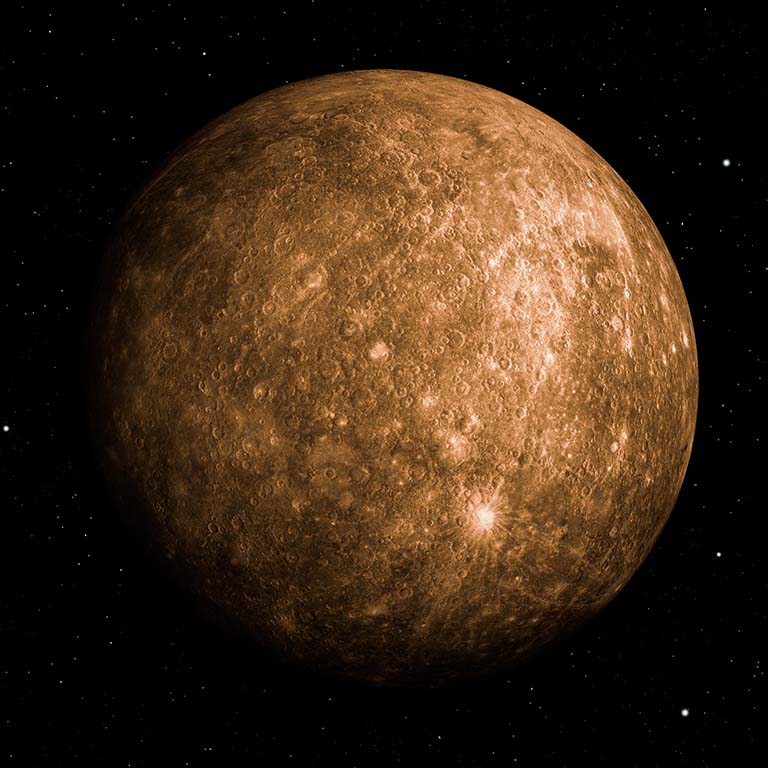BLOOMINGTON, Ind. -- Mars, Venus, Saturn, Jupiter, and Mercury will all be on display in the evening sky during December.
Venus and Mercury will reappear from behind the sun this month, starting deep in twilight low in the southwest. On Dec. 1 the pair of planets will set 38 minutes after the sun. Venus will be much brighter, but it will be less than 1 degree high a half hour after sunset. Mercury will be 3 degrees east of Venus. They will be higher each day, moving together as the month progresses.
On Dec. 24 the crescent moon will join the two planets in the evening sky. Look southwest 30 minutes after sunset to see the pretty triangle, with the moon about 5 degrees from Mercury and 7 degrees from Venus.
Saturn will be 30 degrees high in the south at dusk in early December, but look for it early, for the ringed planet will set by 10 p.m. local time on Dec. 1 and 8 p.m. by Dec. 31. The rings' tilt to our line of sight will drop below 14 degrees late in the month. Saturn's largest moon, Titan, will be an easy target for small telescopes, appearing north of the planet on Dec. 10 and 26 and south on Dec. 2 and 18.
Jupiter will be the brightest planet in the sky after Venus sets. The giant planet will be high in the south in the constellation Pisces. Begin observing Jupiter in late twilight for the best views, when its brilliance is lessened by the brighter sky and its dark equatorial belts stand out. Every other night or so, the Great Red Spot will make a fine appearance.
Mars will be at opposition on Dec. 8 and will be visible all night. Observers at mid-latitudes in the Northern Hemisphere will see the Red Planet peak more than 70 degrees high. Telescopic views of Mars will be best in the first week of the month, before the planet quickly recedes. The full moon will block Mars on Dec. 7.
Meteor shower
The Geminid meteor shower will be active between Dec. 4 and 17, peaking on the night of Dec. 13-14. The moon's light will interfere until it sets around 3 a.m. local time. In a clear dark sky the maximum rate might be more than 100 meteors per hour, but the rate this time will be much lower. The "shooting stars" will seem to radiate from the constellation Gemini, which will be nearly overhead by 1 a.m. for North American viewers. The best display will be between 11 p.m. and 4 a.m.
Solstice
The sun will reach the December solstice on Dec. 21 at 4:48 p.m. EST, marking the start of winter in the Northern Hemisphere and summer in the Southern Hemisphere. For the next six months in the Northern Hemisphere the days will be getting longer.
Moon
The moon will be full on Dec. 7, at last quarter on Dec. 16, new on Dec. 23, and at first quarter on Dec. 29.
Author: Hal Kibbey Email: hkibbey [at] gmail.com


 The College of Arts
The College of Arts